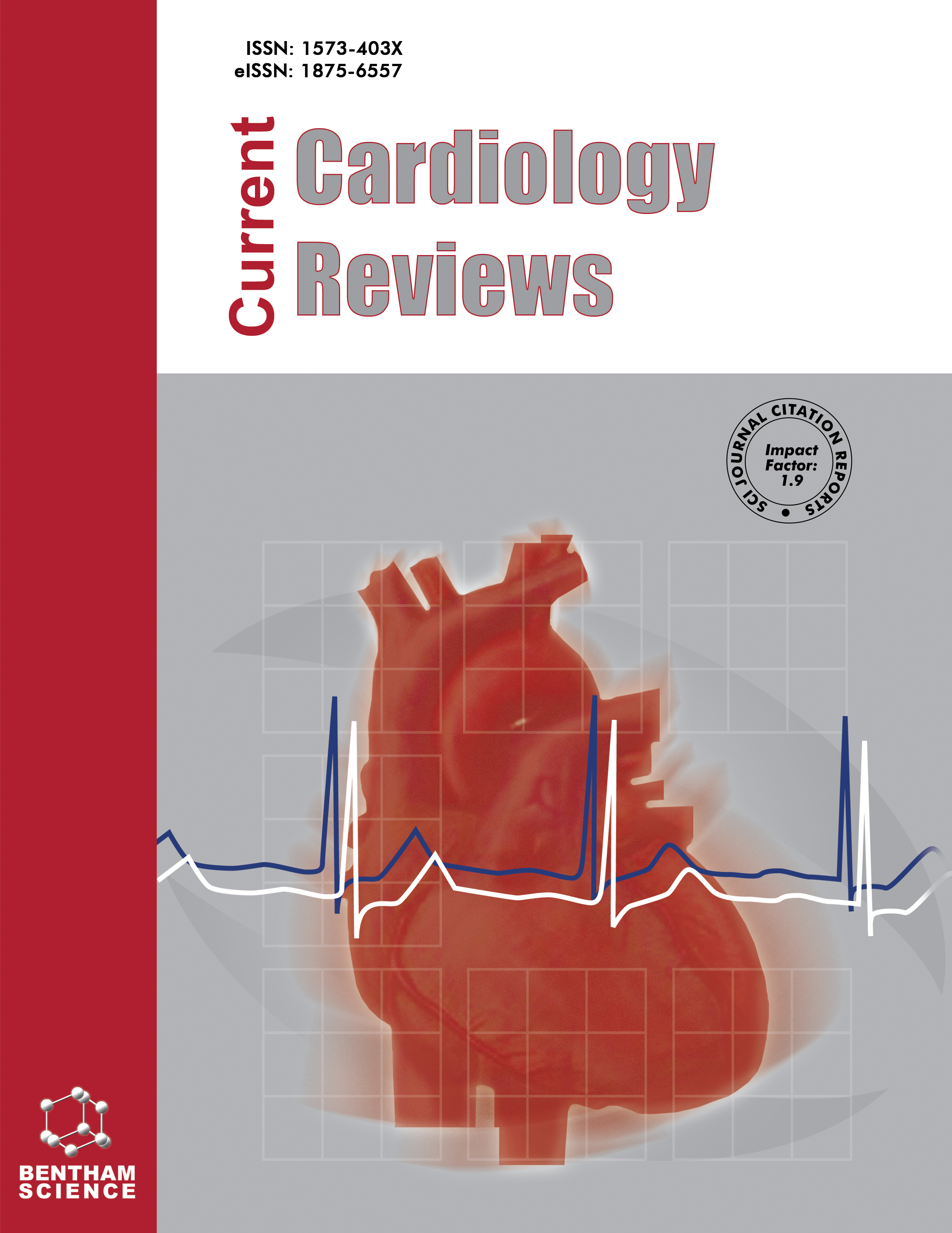- Home
- A-Z Publications
- Current Cardiology Reviews
- Previous Issues
- Volume 15, Issue 2, 2019
Current Cardiology Reviews - Volume 15, Issue 2, 2019
Volume 15, Issue 2, 2019
-
-
Interrelationship Between Kidney Function and Percutaneous Mitral Valve Interventions: A Comprehensive Review
More LessPercutaneous mitral valve repair is emerging as a reasonable alternative especially in those with an unfavorable surgical risk profile in the repair of mitral regurgitation. At this time, our understanding of the effects of underlying renal dysfunction on outcomes with percutaneous mitral valve repair and the effects of this procedure itself on renal function is evolving, as more data emerges in this field. The current evidence sug Read More
-
-
-
Application of G-CSF in Congestive Heart Failure Treatment
More LessIntroduction: Congestive Heart Failure (CHF) is a disorder in which the heart is unable to supply enough blood for body tissues. Since heart is an adaptable organ, it overcomes this condition by going under remodeling process. Considering cardiac myocytes are capable of proliferation after MI, stimulation of neovascularization as well as their regeneration might serve as a novel target in cardiac remodeling prevention and C Read More
-
-
-
Tissue Non-Specific Alkaline Phosphatase and Vascular Calcification: A Potential Therapeutic Target
More LessAuthors: Daniel Azpiazu, Sergio Gonzalo and Ricardo Villa-BellostaVascular calcification is a pathologic phenomenon consisting of calcium phosphate crystal deposition in the vascular walls. Vascular calcification has been found to be a risk factor for cardiovascular diseases, due to its correlation with cardiovascular events and mortality, and it has been associated with aging, diabetes, and chronic kidney disease. Studies of vascular calcification have focused on phosphate homeostasis, p Read More
-
-
-
Acute Kidney Injury Post Cardiac Catheterization: Does Vascular Access Route Matter?
More LessAuthors: Pradhum Ram, Benjamin Horn, Kevin Bryan U. Lo, Gregg Pressman and Janani RangaswamiBackground: Acute Kidney Injury as a complication of cardiac catheterization is associated with increased length of hospital stay and mortality. In recent years, the use of the radial artery for cardiac catheterization is increasing in frequency. Objective: The objective of this concise review was to evaluate the method of cardiac access site and its impact on Acute Kidney Injury following cardiac catheterization. Methods: After a t Read More
-
-
-
Shock – Classification and Pathophysiological Principles of Therapeutics
More LessThe management of patients with shock is extremely challenging because of the myriad of possible clinical presentations in cardiogenic shock, septic shock and hypovolemic shock and the limitations of contemporary therapeutic options. The treatment of shock includes the administration of endogenous catecholamines (epinephrine, norepinephrine, and dopamine) as well as various vasopressor agents that have shown effica Read More
-
-
-
Effect of S-equol and Soy Isoflavones on Heart and Brain
More LessBackground: Observational studies in Asia show that dietary intake of soy isoflavones had a significant inverse association with coronary heart disease (CHD). A recent randomized controlled trial (RCT) of soy isoflavones on atherosclerosis in the US, however, failed to show their benefit. The discrepancy may be due to the much lower prevalence of S-equol producers in Westerners: Only 20-30% of Westerners produce S-equol Read More
-
-
-
Gender Differences in Atrial Fibrillation: A Review of Epidemiology, Management, and Outcomes
More LessAuthors: Stacy Westerman and Nanette WengerAtrial fibrillation is the most common sustained cardiac arrhythmia. The scope and impact of atrial fibrillation are wide; it can affect cardiac function, functional status, and quality of life, and it confers a stroke risk. There are sex differences in atrial fibrillation across the scope of the disease process, from epidemiology and causative mechanisms to management and outcomes. The approach to management of atrial Read More
-
-
-
Adverse Consequences of Right Ventricular Apical Pacing and Novel Strategies to Optimize Left Ventricular Systolic and Diastolic Function
More LessAuthors: Mohammad R. Khurwolah, Jing Yao and Xiang-Qing KongSeveral studies have focused on the deleterious consequences of Right Ventricular Apical (RVA) pacing on Left Ventricular (LV) function, mediated by pacing-induced ventricular dyssynchrony. Therapeutic strategies to reduce the detrimental consequences of RVA pacing have been proposed, that includes upgrading of RVA pacing to Cardiac Resynchronization Therapy (CRT), alternative Right Ventricular (RV) pacing sites, minim Read More
-
Volumes & issues
-
Volume 21 (2025)
-
Volume 20 (2024)
-
Volume 19 (2023)
-
Volume 18 (2022)
-
Volume 17 (2021)
-
Volume 16 (2020)
-
Volume 15 (2019)
-
Volume 14 (2018)
-
Volume 13 (2017)
-
Volume 12 (2016)
-
Volume 11 (2015)
-
Volume 10 (2014)
-
Volume 9 (2013)
-
Volume 8 (2012)
-
Volume 7 (2011)
-
Volume 6 (2010)
-
Volume 5 (2009)
-
Volume 4 (2008)
-
Volume 3 (2007)
-
Volume 2 (2006)
-
Volume 1 (2005)
Most Read This Month
Article
content/journals/ccr
Journal
10
5
false
en


